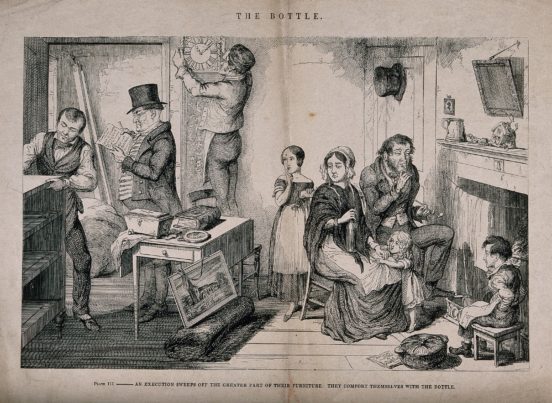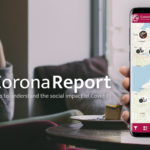What made me write this essay:
“For the past four years I have been writing a historical novel set in 1901 during what is known as the third plague pandemic, an outbreak of bubonic plague that killed millions of people in Asia but not very many in Europe. Over the last two months, friends and family, editors and journalists who know the subject of that novel, “Nights of Plague,” have been asking me a barrage of questions about pandemics.”
This sentence of Orhan Pamuk[1] caught my attention to write this brief essay on the similarities between the philosophical reflections existing in the current Covid-19 and the past historical pandemics through a lens of literary studies.
Tracing the pandemics to COVID-19:
From plagues in medieval periods, Spanish Flu (1918), herpes and legionnaires’ disease (1970s), to AIDS (1980’s), Ebola (2013-2016), severe acute respiratory syndrome (SARS, 2002-2004), and now COVID-19, contagious diseases continue to threaten and damage human populations.[2] It has become a common observation that the contagious diseases’ outbreak makes us feel like we are living within a dystopian novel. It may seem an unwelcome new territory for us, but mankind has in fact stood here before many times and written about it. According to Pamuk[3] both fear of the germs and viruses and people’s initial responses matter. Through initial responses to the recent pandemic people became philosophical, inquisitive, and interrogatory; this can also mean “stoical” and accepting the grim situation.[4] We wonder if philosophy can bring in clarity in this ethical and moral mess.[5] In order to clear the confusion, scientists, literateurs, poets, chroniclers and historians are trying to address local situations and at the same time possess a “desire to identify universal truths about how societies respond to contagious disease”.[6]
People and media have responded to epidemics by spreading rumor, false information, and portraying the disease as foreign and brought in with malicious intent. In Fyodor Dostoyevsky’s “Crime and Punishment”, the protagonist Raskolnikov “dreamed that the whole world was condemned to a terrible new strange plague that had come to Europe from the depths of Asia”.[7] This statement can be evidenced by the dramatic aspect of epidemic response to stigmatise and allocate responsibility. From Jews in medieval Europe to meat mongers in Chinese markets, someone is always blamed. This story of blame exploits existing social divisions of religion, race, ethnicity, class, political or gender identity.[8]
We feel very attracted towards the sense of mystery and darkness through the prediction of mortality and process of death after battling the invisible enemy.[9] In the COVID-19 situation, authors may examine how far it, unlike the previous epidemics is evaluating situations where elderly people will die to retain the “lives, and futures, of the young?”.[10] Poetess Pam Ayres’s latest ode to coronavirus contradicts this notion as she regains her strength the age of 73.[11]
Pandemics have affected social life since the establishment of civilisation. “Hippocrates recorded the first known pandemic in 412 BC, and numerous outbreaks were reported during the Middle Ages. The most notable epidemic, that of the ‘Spanish influenza’, occurred in 1918. Although more than 88 years have passed since that time, and memories of the disaster have become blurred, the sudden emergence of SARS and avian flu has reminded people of this painful past once more”.[12] Defoe’s Chronicle[13] shows us that behind physical and mental suffering there also lies an anger against fate, against a divine will that witnesses and perhaps even condones all this death and human suffering. In modern times we are orchestrated by our fear and the deaths. We share our anxieties and anger via different virtual network (Source: WhatsApp groups and Facebook groups, online fieldwork 2020). We wish we can build a kind of solidarity and resistance against fate and divinity.[14]
Defoe[15] wrote about people keeping their distance when they met each other on the streets during the plagues, but also asking each other for news and stories from their respective hometowns and neighborhoods, so that they might stitch together a broader picture of the disease. Only through that wider view could they hope to escape death and find a safe place.[16] Likewise, in COVID-19 people created groups, blogs, and other social media platforms to exchange and record their sadness, grief, nostalgia, difficulties related to medical processes, missing attending to loved ones’ health crises including mental distraught, missing funerals, cancellation of marriages, big events, online, virtual or home-alone religious, literary and art festivals, online shopping slots, own creativities in different media (Source: WhatsApp groups and Facebook groups, Online field work 2020).
Much of the literature on plague and contagious diseases present the carelessness, incompetence, and selfishness of those in power as the sole instigator of the fury of masses[17] can be compared with the current mismanagement of so many countries’ governments.[18] Medieval writings, such as The Decameron by Giovanni Boccaccio (1313–1375) and The Canterbury Tales by Geoffrey Chaucer (1343–1400), emphasized human behavior: “the fear of contagion increased vices such as avarice, greed, and corruption, which paradoxically led to infection and thus to both moral and physical death”.[19] Under current lockdown the above mentioned vices were displayed by elite and sometimes common citizens in urban settings in the hoarding of essentials from superstores and groceries.[20] However, writers such as Defoe and Camus allowed their readers glimpses of didactic[21] and existential[22] philosophies respectively beneath the waves of vulnerabilities, and fears – as something innate to human nature. A Journal of the Plague Year,[23] one of the most important works of literature ever written on contagion and human behaviour, tells us how in 1664, local authorities in some London neighborhoods tried to make the number of plague deaths appear lower than it was by registering other, invented diseases as the recorded cause of death.[24] Many commentators claim that the current UK government has likewise undermined the real figures and have not counted death figures from care homes or other informal institutes and peoples’ residences.[25]
To write the book The Plague,[26] Camus immersed himself in the history of plagues. He read about Black Death in Europe in the 14th century, the Italian plague of 1630, and the great plague of London of 1665 as well as plagues that ravaged cities on China’s eastern seaboard during the 18th and 19th centuries. However, Camus was not writing about one plague, as has sometimes been suggested, his was a metaphoric tale about the Nazi occupation of France.[27] Like Camus’s Plague[28], Blindness[29] by Jose Saramago uses its pandemic as an allegory of society, where life is reduced to a substantial fight for survival and people succumb to a contagious form of blindness which can transform your vision into a visual milky sea.[30]
Athanasius Kircher’s investigation can be an important early step to understanding contagion, and perhaps even the very first articulation of germ theory. Kircher was possibly the first to view infected blood through a microscope. During the summer and fall of 1656, as Kircher remembered it, the “altogether horrid and unrelenting carnage” of Naples was on everyone’s mind, and “each man, out of dread for the ever-looming image of death, was anxiously and solicitously seeking an antidote that would ensure recovery from so fierce an evil”.[31] He predicted that the prospect of death could sometimes translate into increased inspiration, to achieve immortality. His keen observation (1658) through the Plague as reflected in Scrutinium psetis[32], tells us “people scrubbed floors and walls with vinegar; burned rosemary, cypress, and juniper; and rubbed oils and essences on their skin. The wealthy left for the country if they could. Vagrants were sent to prison or conscripted to help the sick and scrub the streets of filth.”[33]
Parallel to Defoe, Mary Shelley in The Last Man (1926) took her evidence from the riveting diary of plague, and created a kind of science fiction, zombie apocalypse and other apparent consequences of fate. [34] By identifying thus with the plague in her private journal and in The Last Man, Shelley confronted the fact that humanity is the author of its own disasters. As scientists now remind us daily, collective human behaviour will either drive up or flatten the curve of Covid-19’s rate of infection, Shelley also saw clearly that we are both the problem behind and the potential solution to such a pandemic.[35] COVID-19 has creepily invaded the world without prior notice, leaving many, mainly the elderly and other vulnerable people isolated at home as the only means of staying healthy and virus-free. Could they remain healthy,virus-free or avoid deaths?
People discussing COVID-19 frequently cite the famous film Contagion (2011) which opens with a woman coughing. It’s not just nervous throat-clearing. The cough becomes the protagonist and blends with other characters in director Steven Soderbergh’s film, creating terror. Like under COVID-19 we find in the film the policy makers, “scientists and bureaucrats who are looking, for answers, devising containment strategies, working toward a vaccine”.[36]
Modern British authors like Benedict, Vaughan, and Lesley are trying to create fiction under COVID-19 based on mid-life crisis, vaccines, tourists with masks in pubs, characters working in their pajamas, wildly getting on planes, journalists working from homes. They are predicting plots without excitement where characters will not interact, fight, kiss or make love, and face mental health problems. They need to explore the new norms depending on the imagination and the meaning of a multiple human calamity, across an entire overwhelmed population.[37] COVID-19 will create a void in literary pursuits. Hence, rebuilding and resolving new kinds of literary plots and ideas shouldn’t exist in oblivion.
Conclusion:
A profound cultural and ethical aspect of all major epidemics is the loss of access to personal narratives. The collective replaces the individual as protagonist, and the health of the public takes precedence over that of the individual. “There is a paradox in the multiplication of personal catastrophe throughout a society”[38].The accounting of the past sufferings as narrated in different literary and historical texts in this context can produce thick memory with “subjective specificity”[39]. Apocalyptic traditions of pandemics including COVID-19 are deeply rooted in religious and community narratives that are turned toward the ‘end times’.[40]
Cynicism pervaded mankind in the past pandemics, but can we afford to be stoic under the current global crisis. Crucial questions remain on how storytellers in the years to come will portray COVID-19. How will the authors and artists document “the surge in community spirit, the countless heroes among us?”.[41] In summary, under COVID 19 we can expect to become more articulate in our artistic creations about our individual survival, isolation, vulnerability, uncertainty, and certainly the importance of collective introspection of inequality related to pandemic deaths[42].
Dr Nandini Sen is an associate member of Centre for South Asian Studies at the University of Edinburgh.
[1] Pamuk, O. (2020), What the Great Pandemic Novels Teach Us, The New York Times, 23 April 2020 https://www.nytimes.com/2020/04/23/opinion/sunday/coronavirus-orhan-pamuk.html?fbclid=IwAR1NLcqUyD_T0Dz-hxcSQEdCimozN1aTEQteg7QDDUZ9J4fBiUMZjJowGRo
[2] Jones, D. (2020), History in a Crisis -Lessons for Covid-19 , The New England Journal of Medicine, 12 March 2020 https://www.nejm.org/doi/full/10.1056/NEJMp2004361?fbclid=IwAR2tt8b7_JdRGrAVWOWcJdhPHPrhowTWKhTpz3rUTC6-lE0nrW3eAzxIA84#.XqrtrYkhAlo.facebook
[3] Pamuk, O. (2020), What the Great Pandemic Novels Teach Us, The New York Times, 23 April 2020 https://www.nytimes.com/2020/04/23/opinion/sunday/coronavirus-orhan-pamuk.html?fbclid=IwAR1NLcqUyD_T0Dz-hxcSQEdCimozN1aTEQteg7QDDUZ9J4fBiUMZjJowGRo
[4] Abell, S, (2020), A Note from the editor, Times Literary Supplement, 15 May 2020. https://www.the-tls.co.uk/articles/in-this-weeks-tls-31/
[5] Abell, S, (2020), A Note from the editor, Times Literary Supplement, 15 May 2020. https://www.the-tls.co.uk/articles/in-this-weeks-tls-31/
[6] Jones, D. (2020), History in a Crisis -Lessons for Covid-19 , The New England Journal of Medicine, 12 March 2020 https://www.nejm.org/doi/full/10.1056/NEJMp2004361?fbclid=IwAR2tt8b7_JdRGrAVWOWcJdhPHPrhowTWKhTpz3rUTC6-lE0nrW3eAzxIA84#.XqrtrYkhAlo.facebook
[7] Pamuk, O. (2020), What the Great Pandemic Novels Teach Us, The New York Times, 23 April 2020 https://www.nytimes.com/2020/04/23/opinion/sunday/coronavirus-orhan-pamuk.html?fbclid=IwAR1NLcqUyD_T0Dz-hxcSQEdCimozN1aTEQteg7QDDUZ9J4fBiUMZjJowGRo
[8] Jones, D. (2020), History in a Crisis -Lessons for Covid-19 , The New England Journal of Medicine, 12 March 2020 https://www.nejm.org/doi/full/10.1056/NEJMp2004361?fbclid=IwAR2tt8b7_JdRGrAVWOWcJdhPHPrhowTWKhTpz3rUTC6-lE0nrW3eAzxIA84#.XqrtrYkhAlo.facebook
[9] Abell, S, (2020), A Note from the editor, Times Literary Supplement, 15 May 2020. https://www.the-tls.co.uk/articles/in-this-weeks-tls-31/
[10] Abell, S, (2020), A Note from the editor, Times Literary Supplement, 15 May 2020. https://www.the-tls.co.uk/articles/in-this-weeks-tls-31/
[11] http://livingelements.co.uk/a-topical-poem-by-pam-ayres-time-for-us-girls/
[12] Cheng, J.F. and Leung, P.C., 2007, History of Infectious Diseases: What Happened in China During the 1918, International Journal of Infectious Diseases, Volume II, Issue 4, pp-360-364
[13] Defoe, D. (1722), Journal of the Plague Year, in Jordison, S. (2020), Defoe’s Plague Year was written in 1722 but speaks clearly to our times, The Guardian, 5 May 2020. https://www.theguardian.com/books/booksblog/2020/may/05/defoe-a-journal-of-the-plague-year-1722-our-time
[14] Pamuk, O. (2020), What the Great Pandemic Novels Teach Us, The New York Times, 23 April 2020 https://www.nytimes.com/2020/04/23/opinion/sunday/coronavirus-orhan-pamuk.html?fbclid=IwAR1NLcqUyD_T0Dz-hxcSQEdCimozN1aTEQteg7QDDUZ9J4fBiUMZjJowGRo
[15] Defoe, D. (1722), Journal of the Plague Year, in Jordison, S. (2020), Defoe’s Plague Year was written in 1722 but speaks clearly to our times, The Guardian, 5 May 2020. https://www.theguardian.com/books/booksblog/2020/may/05/defoe-a-journal-of-the-plague-year-1722-our-time
[16] Pamuk, O. (2020), What the Great Pandemic Novels Teach Us, The New York Times, 23 April 2020 https://www.nytimes.com/2020/04/23/opinion/sunday/coronavirus-orhan-pamuk.html?fbclid=IwAR1NLcqUyD_T0Dz-hxcSQEdCimozN1aTEQteg7QDDUZ9J4fBiUMZjJowGRo
[17] See footnote 16.
[18] https://www.ghe.law.ed.ac.uk/the-social-determinants-of-covid-19-and-bame-disproportionality-repost-by-nasar-meer-and-colleagues/ ; https://www.ghe.law.ed.ac.uk/the-lancet-what-does-it-mean-to-be-made-vulnerable-in-the-era-of-covid-19-by-ayesha-ahmad-et-al/; https://www.ghe.law.ed.ac.uk/blog-series-part-2-economic-impact-of-covid-19-migrant-labourers-in-india-by-nandini-sen-and-colleagues/; https://blogs.ed.ac.uk/covid19perspectives/2020/05/26/indias-informal-economy-gender-based-violence-and-mental-health-challenges-demand-crucial-inspection-write-nandini-sen-anusua-singh-roy-jayanta-bhattacharya-and-subrata-shankar-bagchi/
[19] Riva, M. and et al, (2014), Pandemic Fear and Literature: Observations from Jack London’s The Scarlet Plague, Emerging Infectious Diseases, 2014. https://www.ncbi.nlm.nih.gov/pmc/articles/PMC4193163/
[20] https://www.ghe.law.ed.ac.uk/social-justice-and-global-ethics-are-key-to-pandemic-planning-and-response/ and on-line fieldwork via what’s app 2020
[21] https://www.britannica.com/biography/Daniel-Defoe
[22] Camus, A. (1947), The Plague, Penguin Books.
[23] Defoe, D. (1722), Journal of the Plague Year, in Jordison, S. (2020), Defoe’s Plague Year was written in 1722 but speaks clearly to our times, The Guardian, 5 May 2020. https://www.theguardian.com/books/booksblog/2020/may/05/defoe-a-journal-of-the-plague-year-1722-our-time
[24] See footnote 16.
[25] https://www.independent.co.uk/news/health/uk-coronavirus-deaths-latest-cases-covid-19-a9546506.html?fbclid=IwAR2WSMzIFZXCZgKhr1BGnVCC-SpDs8oG7-bSFNFm8np8F6A8cwhQiFQPrPA
[26] See footnote 21.
[27] Botton. A., 19 March 2020, Camus on the Coronavirus, The New York Times, https://www.nytimes.com/2020/03/19/opinion/sunday/coronavirus-camus-plague.html
[28] See footnote 16.
[29] Saramago, J. (1995, 2013) Blindness, Vintage.
[30] Penguin Features and articles 2020, Why people are turning to pandemic fiction to help process the Covid-19 crisis. https://www.penguin.co.uk/articles/2020/mar/pandemics-plagues-in-literature/?fbclid=IwAR1vkAi0ZgLif7–JdileeLeY7j14T-JdynfXVDUjZTzqCw2k2cRN-e-upw
[31] https://publicdomainreview.org/essay/athanasius-kircher-study-of-the-plague; https://www.journals.uchicago.edu/doi/abs/10.1086/368490?journalCode=osiris
[32] Scrutinium physico-medicum contagiosæ luis, quae pestis dicitur Athanasius Kircher1658 and Ars Magna Lucis Et Umbrae Athanasius Kircher1646
[33] (Martha Baldwin, “Athanasius Kircher and the Magnetic Philosophy” (PhD diss., University of Chicago, 1987), 387–390 in article of Glassie, J. 2020). (Athanasius Kircher, Scrutinium Physico-Medicum Contagiosae Luis, Quae Pestis Dicitur (Rome: Vitale Mascardi, 1658), Glassie, J. 2020). https://publicdomainreview.org/essay/athanasius-kircher-study-of-the-plague?fbclid=IwAR1We9bb_iEDPeljYqKdLYFRLJ61GPOxeCiCoPLxhl-ZRt3YoDa8nnU_a7g
[34] See footnote 30.
[35] Botting, E. H. (2020), Journals of sorrow, Mary Shelley’s visions of contagion, Times Literary Supplement, 8 May 2020, https://www.the-tls.co.uk/articles/in-this-weeks-tls-31/
[36] Morris, W. 10 March 2020 For Me, Rewatching ‘Contagion’ Was Fun, Until It Wasn’t, The New York Times; https://www.nytimes.com/2020/03/10/movies/contagion-movie-coronavirus.html;
Bailey, J., (2020), The Ending of Steven Soderbergh’s Contagion, Revisited, Vulture, 30 January 2020.
[37] Flood. A, (2020), No Pubs, No Kissing, No Flying,- How Covid-19 is Forcing Authors to Change their Novels, The Guardian, 1 June 2020; https://www.theguardian.com/books/2020/jun/01/no-pubs-no-kissing-no-flying-how-covid-19-is-forcing-authors-to-change-their-novels?fbclid=IwAR1dX8c0VKa8wTK2JGkz0wKaojmaSf4sRUkL5I8zEB4bNV9VsXx7AnEXTuM
[38] Belling, C. (2009), Overwhelming the Medium: Fiction and Trauma of Pandemic Influenza in 1918, Literature and Medicine, Volume-28, Number-1, Johns Hopkins University Press; https://muse.jhu.edu/article/377046
[39] Belling, C. (2009), Overwhelming the Medium: Fiction and Trauma of Pandemic Influenza in 1918, Literature and Medicine, Volume-28, Number-1, Johns Hopkins University Press; https://muse.jhu.edu/article/377046
[40] Peters. M. A., (2020), Love and social distancing in the time of Covid-19, The philosophy and literature of pandemics, Journal of Educational Philosophy and Theory, Taylor and Francis online. https://www.tandfonline.com/doi/full/10.1080/00131857.2020.1750091
[41] Ciabattari, J. (2020), The Plague writers who predicted today, BBC Culture, 14 April 2020; https://www.bbc.com/culture/article/20200413-what-can-we-learn-from-pandemic-fiction
[42] https://blogs.ed.ac.uk/covid19perspectives/2020/05/01/the-social-determinants-of-covid-19-and-blame-disproportionality-by-nasar-meer-kaveri-qureshi-ben-kasstan-and-sarah-hill/










Comments by abhatias